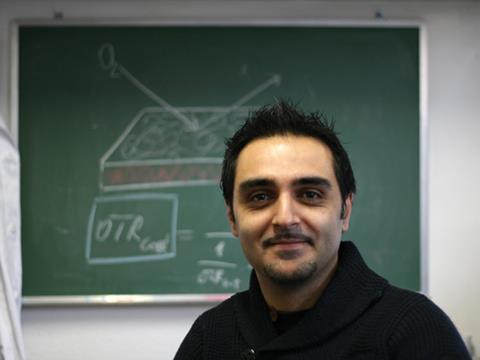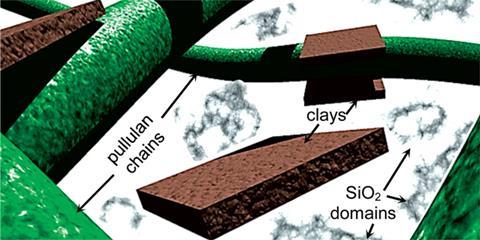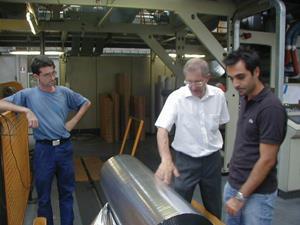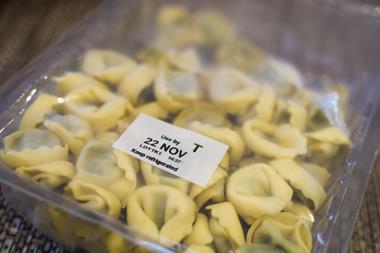Stefano Farris discusses how his research could help reduce the amount of plastic used to wrap ham, cheese and pasta
Stefano Farris is an assistant professor in the department of food, environmental and nutritional sciences at the University of Milan, Italy. His research group designs and develops high-performance materials.

How would you describe your overall research aims?
My team is trying to develop new materials for food packaging applications, particularly in the form of coatings to improve and enhance plastic substrates. The main goal of our research is to optimise current materials, which are very heavy. We aim to reduce the thickness of plastics used in the food packaging field by developing high performance coatings in such a way that we can achieve the same performance, or better, by reducing the thickness of the structure. They are high performance because they should include not only one, but several properties that are normally achieved by different layers.
So you still intend to use plastic but you hope to be able to use less of it?
Exactly. We cannot avoid the use of plastics. Bioplastics are very nice but so far they cannot be compared to traditional plastics. Food packaging structures at the moment are very heavy because of the thickness of the plastic. We want to reduce the plastic we use in our everyday lives.
What other problems are there with the plastics currently used in food packaging?
Oxygen permeation, which is typical of polyolefins such as polyethylene and polypropylene, is a big problem for oxygen-sensitive foods, such as fatty products, where oxidative rancidity may occur if the oxygen concentration inside the package is high. In general, permeation of gases across packaging is a key problem to tackle when extending the shelf life of packaged food. For instance, many foods are packaged in modified atmospheres, without any oxygen. If the packaging material is not an oxygen barrier then the inner atmosphere can be completely lost. We want to be able to maintain the internal atmosphere with our coatings. Another big issue is represented by light, especially UV radiation, which may discolour food and promote hydrolytic rancidity. Another important issue concerns the development of thin coatings to act as barrier against water vapour, which is detrimental not only for dried food, but because moisture uptake is associated with food spoilage due to moulds and other microorganisms.
My lab is also actively involved in the design and development of active coatings, so coatings which are able to interact with food by releasing active molecules, for example antimicrobials or antioxidants. Instead of using preservatives within the food matrix, we hope to create coatings which can act as a reservoir and release active molecules slowly over time. This is not an easy task to achieve because the active molecules need to be released in response to some kind of trigger like the internal humidity, the pH of the food, or light. We also need to tailor our system based on the food we are trying to protect.
Tell me more about your oxygen barrier coatings.
We’re making oxygen barrier coatings using inorganic fillers, especially clays.1,2 Clays are cheap and we need to remember that food packaging is a cheap market, it cannot compete with biomedical or pharmaceutical applications, so we need to consider that when developing food packaging. We have successfully used clay, more specifically montmorillonite, along with an exopolysaccharide called pullulan, which comes from yeast. This polysaccharide has inherent oxygen barrier properties due to the presence of hydroxyl groups along its backbone. Unfortunately, pullulan is water sensitive so the oxygen barrier properties occur only under dry conditions, up to a maximum of 50% relative humidity. However, by using clay we have made coatings with impressive oxygen barrier properties, even at 70/80% relative humidity – this is a very important step in the food packaging field.As part of this work we used a sol–gel chemistry approach with metal oxide precursors to fabricate a glass-like silica network without using any hazardous chemicals.

Pullulan provides the oxygen barrier properties; the clay reduces oxygen diffusion across the material, just by increasing the path of the oxygen molecules; and the glass-like network provides physical impedance.
The only problem is that the silica network is brittle so we have to tailor our formulation to reduce the brittleness.
Our coating is completely transparent. In most cases when you want an overall barrier, you need to use aluminium foil. However, we can combine polypropylene which is a moisture barrier, with our coating, which is an oxygen barrier, to get the same performance as foil, but as a completely transparent package. This is very important for consumers who want to see through the package and therefore important from a market point of view.
So have you coated this onto plastic yet?

We have produced this coating on three different plastics: polypropylene (PP); polyethylene terephthalate (PET); and also polyamide (nylon 6-6). One of our formulations is currently being used by a European company called Metalvuoto who are now selling PP, PET, and nylon coated with one of our formulations. This kind of coating can be used for several food products, such as fresh cheese, fresh pasta, ham, etc, under both refrigerated and room temperature conditions. In practice, the coating we have developed can compete with polyvinylidene chloride (PVDC), ethylene vinyl alcohol (EVOH) and poly vinyl alcohol (PVOH), achieving the same performance using a much thinner layer of plastic. By using less plastic you can save money. That’s why companies and end-users are very keen on the idea of these coatings.
How much do the coatings cost?
They cost about €2.2/kg, depending on the specific formulation used and on the plastic material beneath. Companies can sell the same base film, for example polypropylene, but reduce the thickness they use because of the coating.
Are there any problems when disposing of plastics with these coatings on?
By law you can still consider it a recyclable material. In our case the coating is only 200–300nm thick so the bulk material is still recyclable.
Have you seen your coating being used?
You can find our coating in the supermarket on certain brands of cheese, pasta and ham. For a researcher it is a great feeling to see your efforts come to fruition like that.
What’s next for your coatings work?
We are trying to upgrade our technology by using graphene. Graphene’s properties are fantastic but it is expensive to make high quality graphene. Since food packaging is very cheap, we could never use it according to the current fabrication procedures, which are expensive, low-yield and unpopular from an environmental point of view, due to the use of harsh chemicals. Therefore, we are trying to find an alternative way to produce graphene by exploring an ultrasonication approach that uses polysaccharides. Polysaccharides can be used to make our graphene stable over time. Ultrasonication separates graphite out to give graphene but to avoid restacking of the layer we can use polysaccharides, which have a high affinity for graphene. This means we can store graphene over time and therefore sell it overseas, which is important from a commercial point of view. We are currently testing graphene’s properties from a food packaging point of view, for example its oxygen barrier and water penetration properties.
You are part of several industrial collaborations. How did they come about?
In Italy, we are in the middle of an economic crisis. Everyone is asking for high performance solutions that are no more expensive than what they are already using. Companies are more willing to scout out potential collaborations with academic labs. The companies we work with at the moment found us after reading our papers or hearing about our research during conferences, meetings and fairs.












No comments yet